Manual showdown: BMW M2 vs Honda Civic Type R vs Mazda MX-5
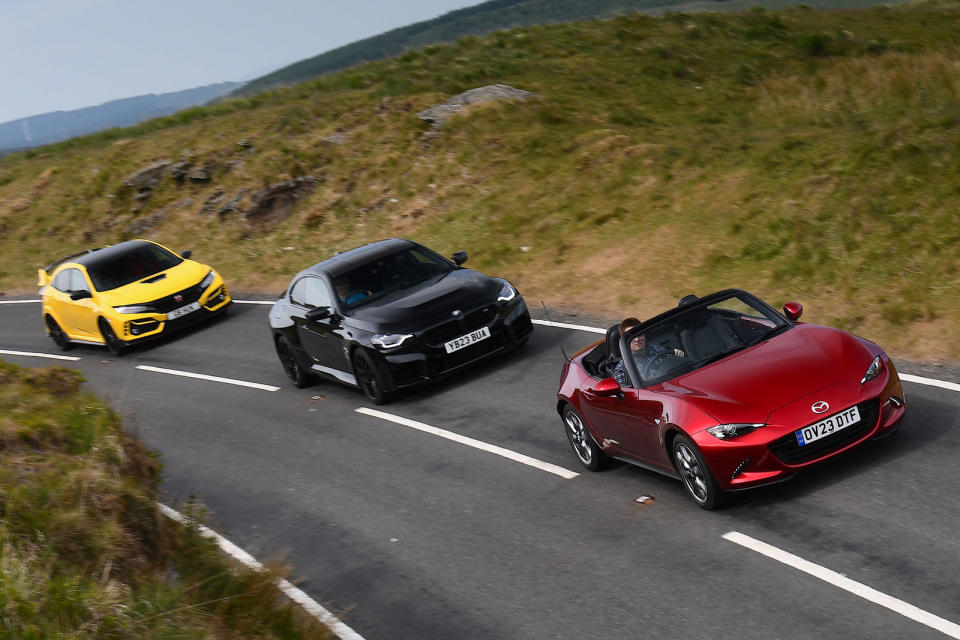
Few modern cars invite you to be as involved in the driving experience as this trio
We are off script already and have only just started. This was supposed to be a simple test of manual gearboxes.
Then BMW launched the new ‘G87 ’ M2 coupé, now the only M car you can buy with a manual gearbox and quite an exciting prospect.
So we arranged a little get-together with two of the greatest compact, affordable, manual-equipped driver’s cars of recent times: the perennially just-updated Mazda MX-5, and the previous-generation Honda Civic Type R.
Which has the sweetest shift? In which is the act of first-hand cog swapping most enticing? I didn’t realise that those two questions might have different answers but, having driven these three cars extensively, I’m now convinced that they can. Or, rather, they could.
Why are manual gearboxes so good, anyway?

It’s impossible, you see, to disconnect the ‘what’ from the ‘why’ where manual cars are concerned: the tactile quality and mechanical satisfaction of the action of gearlever and clutch pedal themselves, with the impetus and occasion given to you by the wider driving experience to operate them in the first place. They are inseparable.
A great manual gearbox is like the all-important continuity midfielder on a football pitch, or some eminent business networking specialist. It brings things together, makes them gel and enables their greatest qualities.
These three cars have a varied assortment of dynamic strengths that make them special, memorable and rewarding, each in different ways. But it’s the way that each of their gearboxes connects you to those various strengths, bringing them together like some virtuoso orchestra conductor into a harmonious driving experience, that we are interested in today.
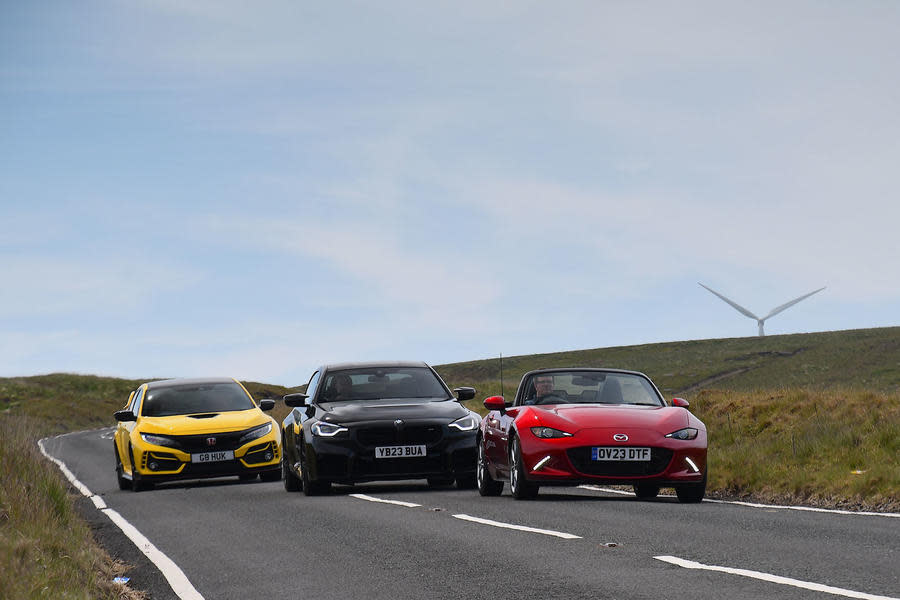
This isn’t just about shift quality, because that would be spectacularly missing the point. This is about what a great manual gearbox can do, rather than simply how it feels.
And, even in 2023, three pedals and a stick-shifter can still do an awful lot. The Autocar readership doesn’t need telling.
So how great it is to see BMW’s M division following the likes of Porsche, Honda, Mazda, Ford and Hyundai in acknowledging that there is still a place for manual gearboxes in the combustion-engined sports cars of the present.

When given the choice, customers so often buy automatics, which are generally quicker and do better on lab test emissions and economy. We know. So what? Driver’s cars are for driving.
A good dual-clutch automatic may be easier to get a fast lap time from. It may even better integrate with a modern torque-vectoring four-wheel drive system.
But if your aim is to make me feel like an absolutely central part of what’s going on around me, there can be no better place to start than by giving me total control of exactly when – and how – the engine is connected to the driven axle.
Gear selection, shift timing, engine revs, speed and style of clutch actuation: just let me do it all myself – and for real please, not through a button and some paddle shifters.

The manual-equipped M2 does just that. It has an automatic rev-matching function, but it’s easy to turn off. Once you have, the car benefits from some great dynamic fundamentals: a powerful, free-revving six-cylinder engine with a superbly broad spread of accessible torque, a fairly compact and very nicely balanced rear-wheel-drive chassis with a shortish wheelbase and a kerb weight that… well, let’s say it’s low enough.
Bang on 1700kg isn’t exactly light for a smallish sports coupé. When the other rear-driver in your group test weighs less than 1100kg, there’s no denying that.
Look up the homologated kerb weight on a 2017 ‘F87’ M2 and you will discover that this car has put on a shade over 200kg between early examples of the last-generation car and this one, and there are one or two hints of that extra weight in the way it rides and turns in.

None, however, in the way it performs – because a smidgeon over 400lb ft of torque, available across about half of the ‘S58’ straight six ’s operating rev range, feels like a whole heap. After the merest milli-pause for its twin turbos to spool, the M2 has the kind of thrust that often makes a downshift entirely optional when the road ahead opens and you feel like cracking on.
That is something you can say, in an even more emphatic way, of the Civic Type R – where maximum torque can rip through the driveline, in any one of several gears, a little like a clay pigeon catapulting away from a launcher. But, funnily enough, the opposite is true of the MX-5, where absolutely every downshift matters. We will come back to that.
Best manual gearbox: shift quality

For now, let’s get into the detail on shift quality – because if not here, where else? The M2’s feels very BMW: a little elastic and springy, but medium-heavy and deliberate with it, and quite long of throw.
The cables moving the individual gears around have that little bit of give in them, but are plainly quite strong and under plenty of consistent tension – as if you could remove them, lash them together and use them in the gym.
There’s a sense of stretch and twang, then – of give and release to every shift – but no real slack to speak of. It’s a gearbox that rewards a double-tap of the clutch pedal, a medium-firm hand, and a syncopated sense of timing – which, in a nicely evocative way, is how BMW manual ’boxes have felt for as long as I’ve been driving them.

There is less springy compliance, and more mechanical definition, about the six-speed shift action in the Civic Type R Limited Edition. When it launched the previous-generation ‘FK8’ Civic Type R in 2017, Honda took the 2.0-litre, three-pedal powertrain package from the previous car and revised it in plenty of telling ways, the transmission getting a lighter flywheel and a shorter final drive for starters.
Then, in 2020, when the Type R GT and the Limited Edition emerged, it added a teardrop-shaped aluminium shift knob containing a 90-gram counter weight intended to refine the car’s shift quality to an even higher standard.

Our test car, it should be noted, had 20,000 pretty hard miles on it, so wasn’t nearly as box-fresh as either the BMW or the Mazda. Even so, it felt good. The shift action is shorter and lighter than the BMW’s; less springy, with more mechanical definition.
If you like to feel that you’re working the synchro with your finger tips, enmeshing each gear in turn at really close quarters, it’s your kind of gearbox.
It’s very much a ‘one-and-two’ kind of shift action, though: you tease each ratio out of train, cross the gate, then slot the next – with just a little bit of dislocated feel to the lever as it crosses over.
It’s slick enough, rarely baulking or crunching even if you hurry it. But, because of its relative lightness and that split second of floaty stasis, you don’t feel as if good pedal timing is too important to nailing the perfect change. When you really zero in on the fine detail, there’s just a tiny, momentary hint of vagueness to it.
But there is absolutely none of that about the shift quality of the MX-5. Shorter still than the Honda’s action, and a bit rifle-bolt-stabby, the Mazda’s has a compactness and economy about it that is emblematic of the whole car.

Perfectly placed at the head of the raised transmission tunnel, the lever seems to have a life of its own at times, bobbing vertically at its own frequency as the car rides over bumps, and vibing gently with rising engine revs. It feels connected to every major mechanical in the car, in other words – a lightning rod for every tactile seam.
Firm enough to need a shove from the shoulder when you are upshifting from cold, yet easing up as the fluids warm, its crowning glory is a wonderful, cantilevered shift action. Where the Honda, and to a lesser extent the BMW, needs that ‘one-and-two’ prod across the gate, there’s something about Mazda’s gearbox that makes it feel different.
While it clearly doesn’t quite amount to one fluid movement, the tension and momentum you build in disconnecting one ratio in the MX-5 somehow feeds you into the next one. It may simply be some genius of counter weighting, but it’s almost as if the next gear could be partly pre-engaged, like some stick-operated DSG without the extra clutch.
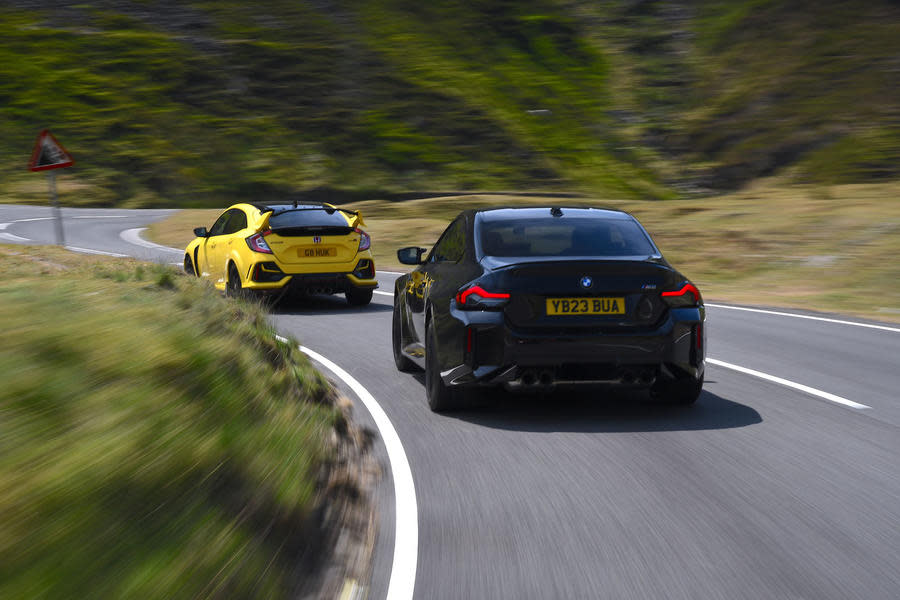
Best manual gearbox: ergonomics
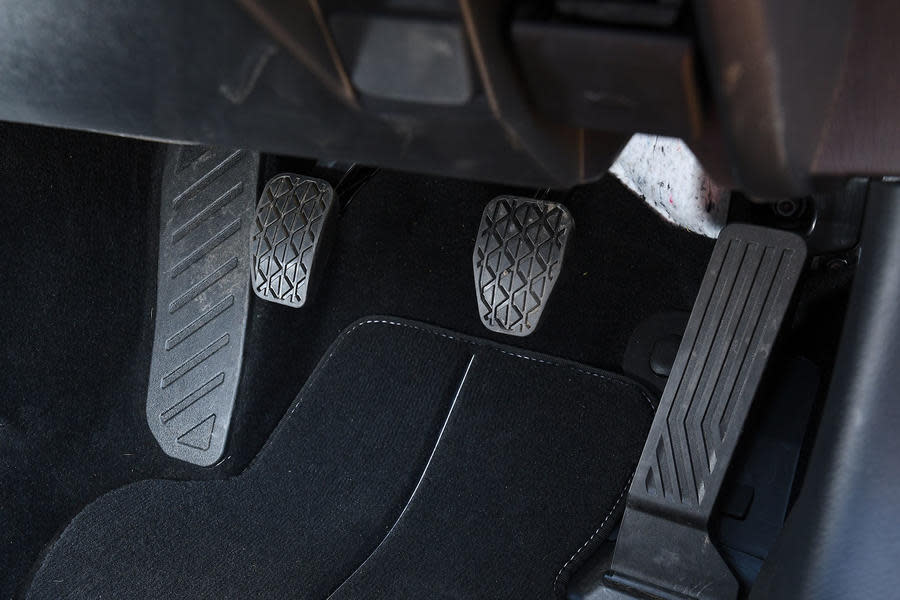
Next up: pedal placement – a hugely important factor in a satisfying three-pedal driving experience. None of our cars truly excels in this regard, but a couple of them fall slightly behind.
While the Mazda’s footwell is small and its pedals a little offset, the inevitable product of its tight packaging, it works well. A high-sitting clutch pedal is a minor irritation, but careful relative positioning of the brake and floor-mounted accelerator pedals does allow you to pull off heel-and-toe downshifts when you want to feel perfectly in tune with the car.
The Honda, by contrast, has pedals positioned in millimetre-perfect ergonomic position in front of the left edge, centre and right edge of the driver’s seat respectively.
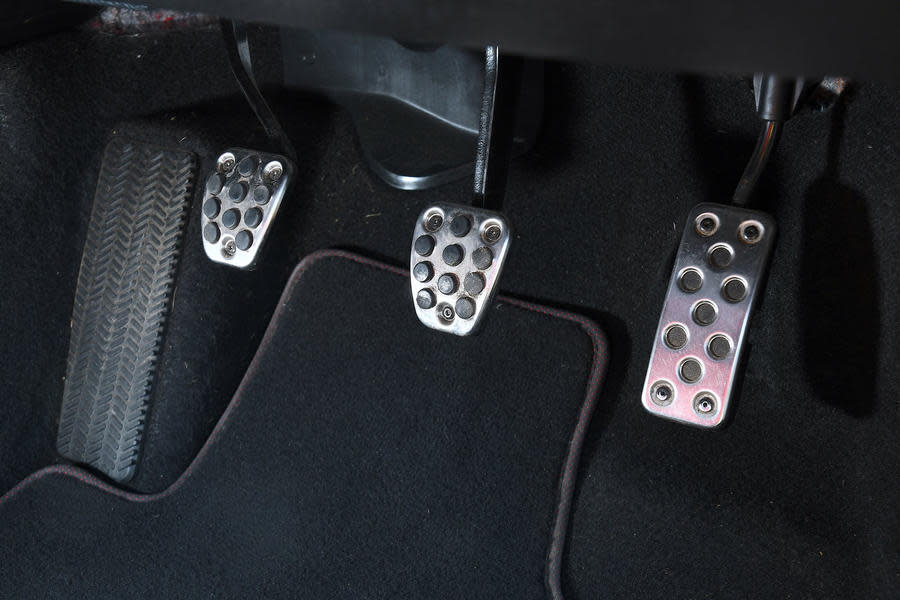
The downside is that the brake and accelerator are too far removed from each other to easily bridge the gap with your right foot, so you tend to rely on the car’s automatic rev-matching system for downshifts, where you could – and probably should – be doing it the old-fashioned way.
And then comes the M2’s footwell, which looks like a bit of a lash-up by comparison.

It’s what happens when a manual version of a car is commissioned on a model platform that hardly supports any other, and BMW’s ergonomics specialists scratch their heads trying to figure out how best to squeeze three pedals and a footrest into a space that hardly ever has more than two.
It’s as if there’s a game of musical chairs going on down there, and everyone has had to move a place to the right.
The clutch pedal is aligned roughly centrally with the seat cushion, the brake pedal being where the accelerator really ought to be, and the accelerator farther out still.
If there is one good reason to avoid the M2 manual, this might be it. While a little disappointing in prospect, it didn’t bother me much while driving the car. It’s not awful – just unexpected.
Best manual gearbox: verdict

The truth is that all three of these cars offer a driving experience enhanced by a manual transmission – warts and all. In the Honda, the clutch and gearlever feel like the riding harness and stirrups of some slightly crazed racing mare that wants nothing more than to be given its head. They are worthy supporting acts, in other words, for an engine in a starring role.
In the BMW, the gearbox controls are heavier, stretchier, more particular and a little more demanding – but they lead you to greater reward. The slightly stubborn heft of the M2’s gearlever and clutch pedal are clues to the car’s character.
Treat it with a firm enough hand, ask enough of it, learn to navigate its wrinkles, and you will discover more M-typical handling entertainment than you dared hope for.
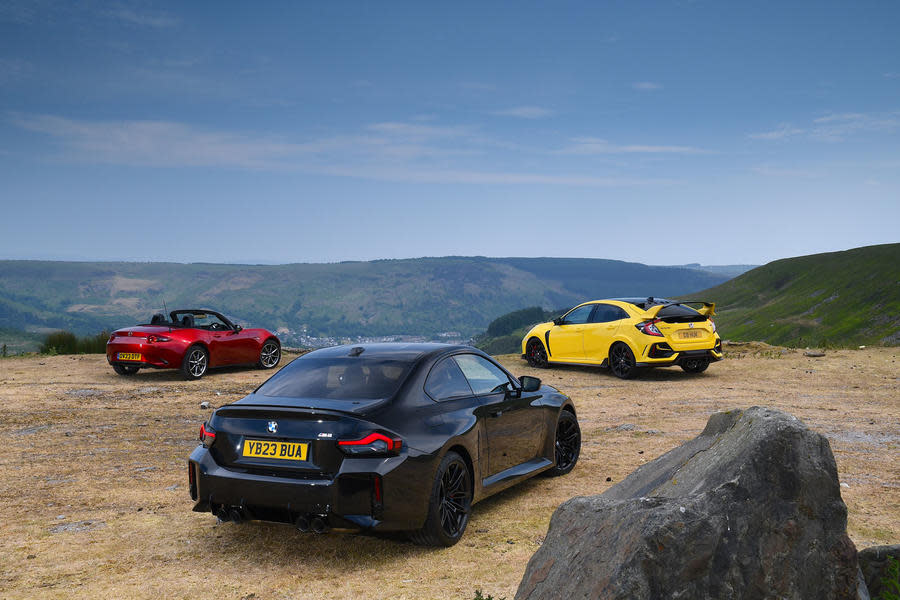
But in the Mazda, the car’s six-speed manual gearbox somehow occupies centre stage. The brilliance of it allows you to get even more from an engine that makes ‘only ’ 181bhp, and from a simple rear-drive chassis that needn’t offer too much mechanical grip to the road, or take it self too seriously, to really absorb and enthral.
Pick your gear and revs wisely: to balance the chassis, enliven the driven wheels and help the car on its way into, through and out of t he corner you are looking at. Engage your brain and observe what’s coming. Think the car down the road; don’t just steer it.
A great manual gearbox makes it worth your while reading the road ahead like a snooker player planning a century break. And a Mazda MX-5 makes it more worthwhile than most.
Winner: Mazda MX-5 2.0 Exclusive-Line
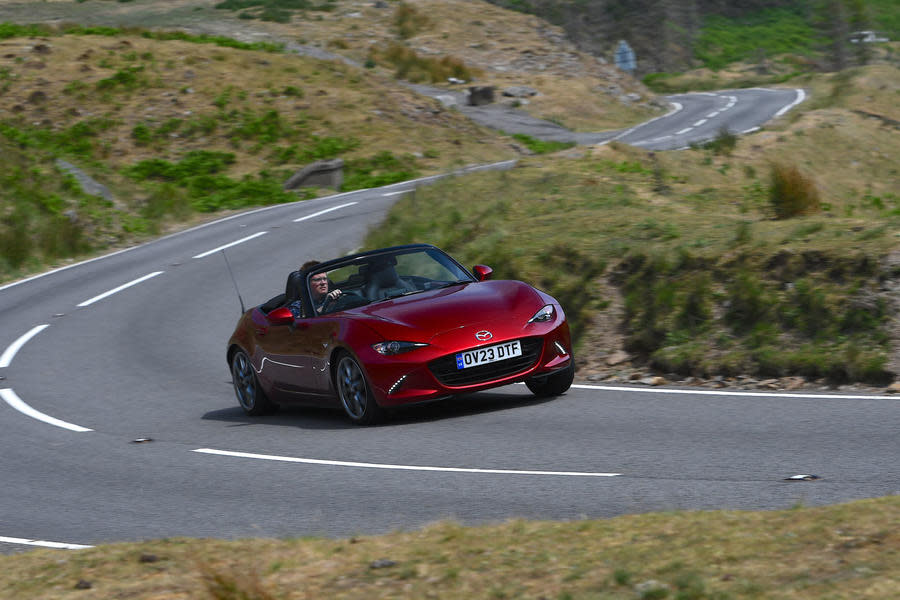
Eight years young and still a shining example of how to make a sports car entertaining. Manual driveline is phenomenally good.
Price £29,765 Engine 4 cyls in line, 1998cc, petrol Power 181bhp at 7000rpm Torque 151lb ft at 4000rpm Gearbox 6-spd manual, RWD Kerb weight 1051kg 0-62mph 6.5sec Top speed 136mph Economy 40.9mpg CO2, tax band 155g/km, 36%
Second place: BMW M2 Coupé
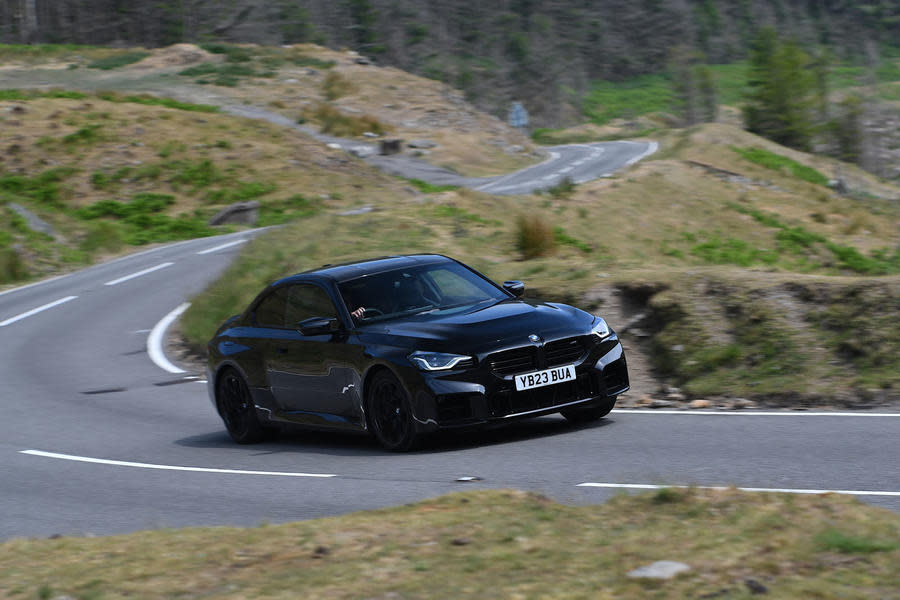
Superb engine and chassis are made more rewarding by a gearbox of a classic BMW feel. Offset pedals a potential irritation, though.
Price £67,030 Engine 6 cyls in line, 2993cc, twin-turbocharged, petrol Power 453bhp at 6250rpm Torque 406lb ft at 2650-5870rpm Gearbox 6-spd manual, RWD Kerb weight 1700kg 0-62mph 4.3sec Top speed 155mph Economy 29.1mpg CO2, tax band 220-228g/km, 37%
Third place: Honda Civic Type R Limited Edition
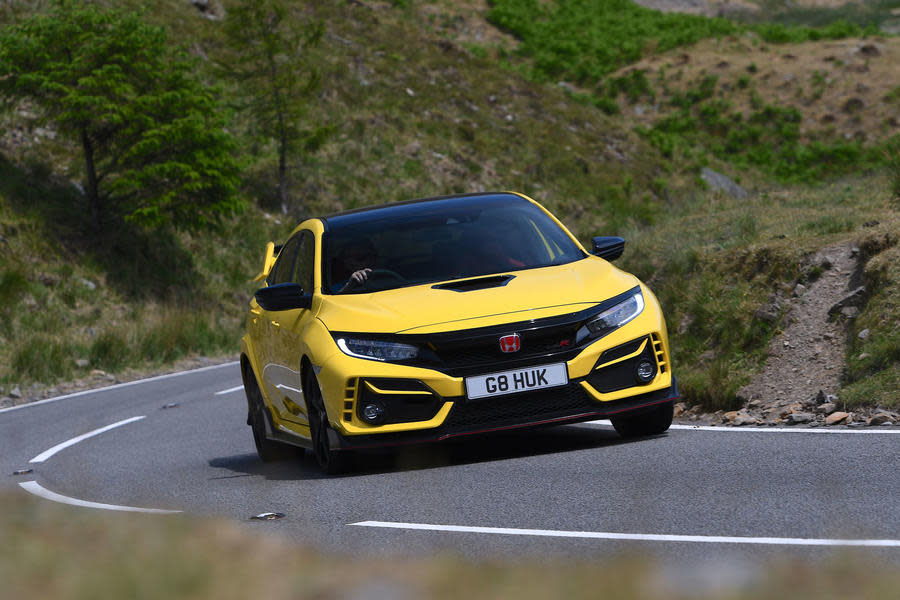
Slick, detailed shift feel brings you closer to a firecracker turbo engine, but the driving experience it amounts to isn’t quite in the Mazda or BMW’s league. 3rd
Price £39,995 (2020) Engine 4 cyls in line, 1996cc, turbocharged, petrol Power 315bhp at 6500rpm Torque 295lb ft at 2500-4500rpm Gearbox 6-spd manual, FWD Kerb weight 1358kg 0-62mph 5.7sec Top speed 168mph Economy 33.6mpg CO2, tax band 191g/km, 37%
]]>

 Yahoo Autos
Yahoo Autos 